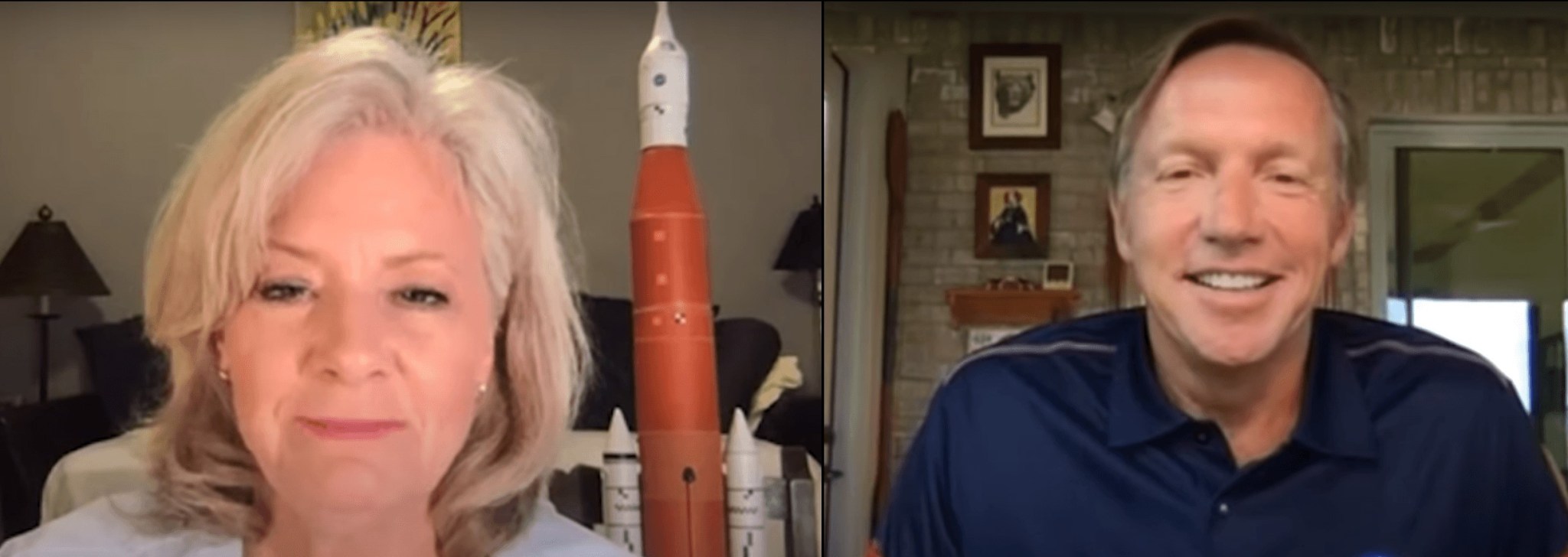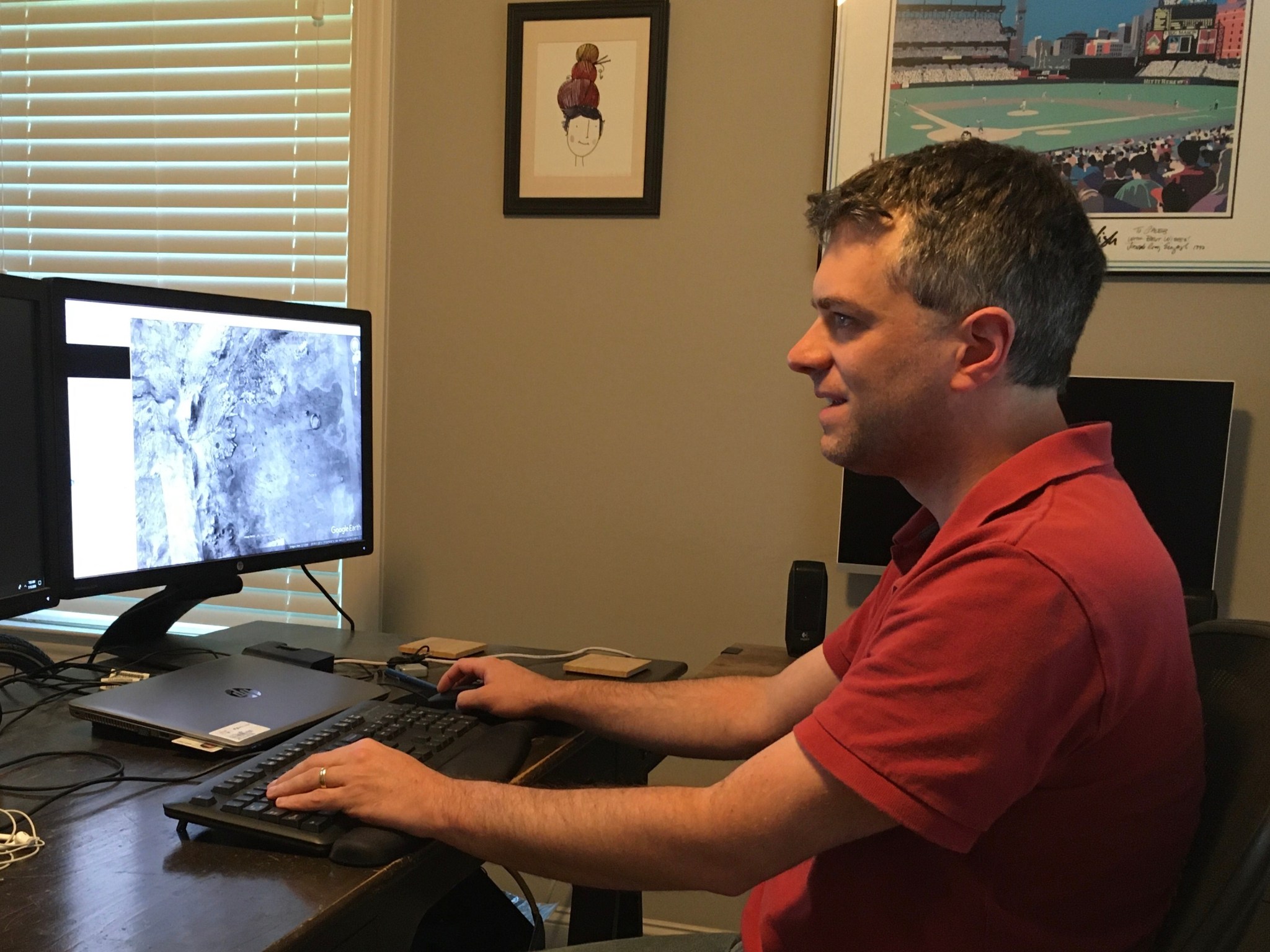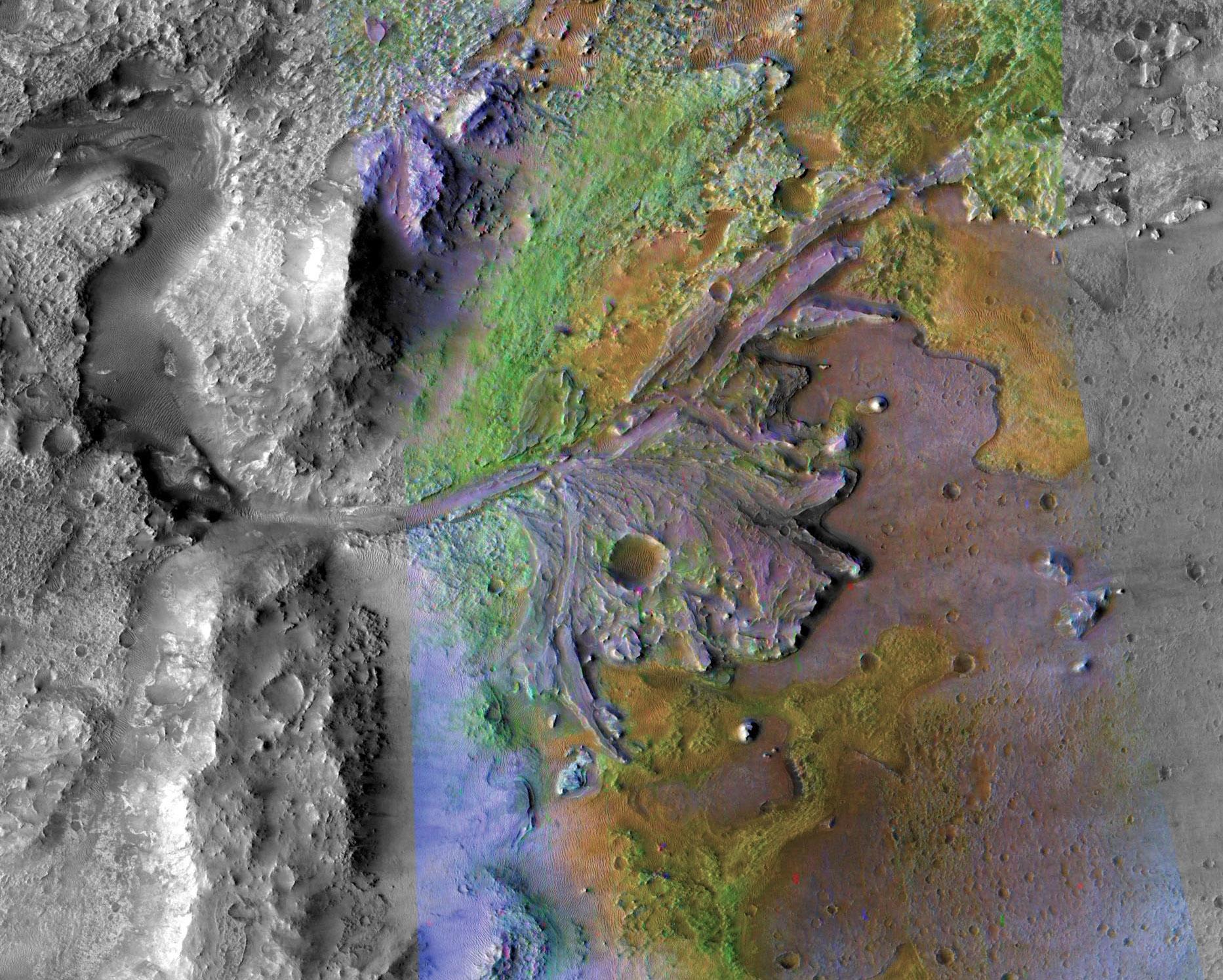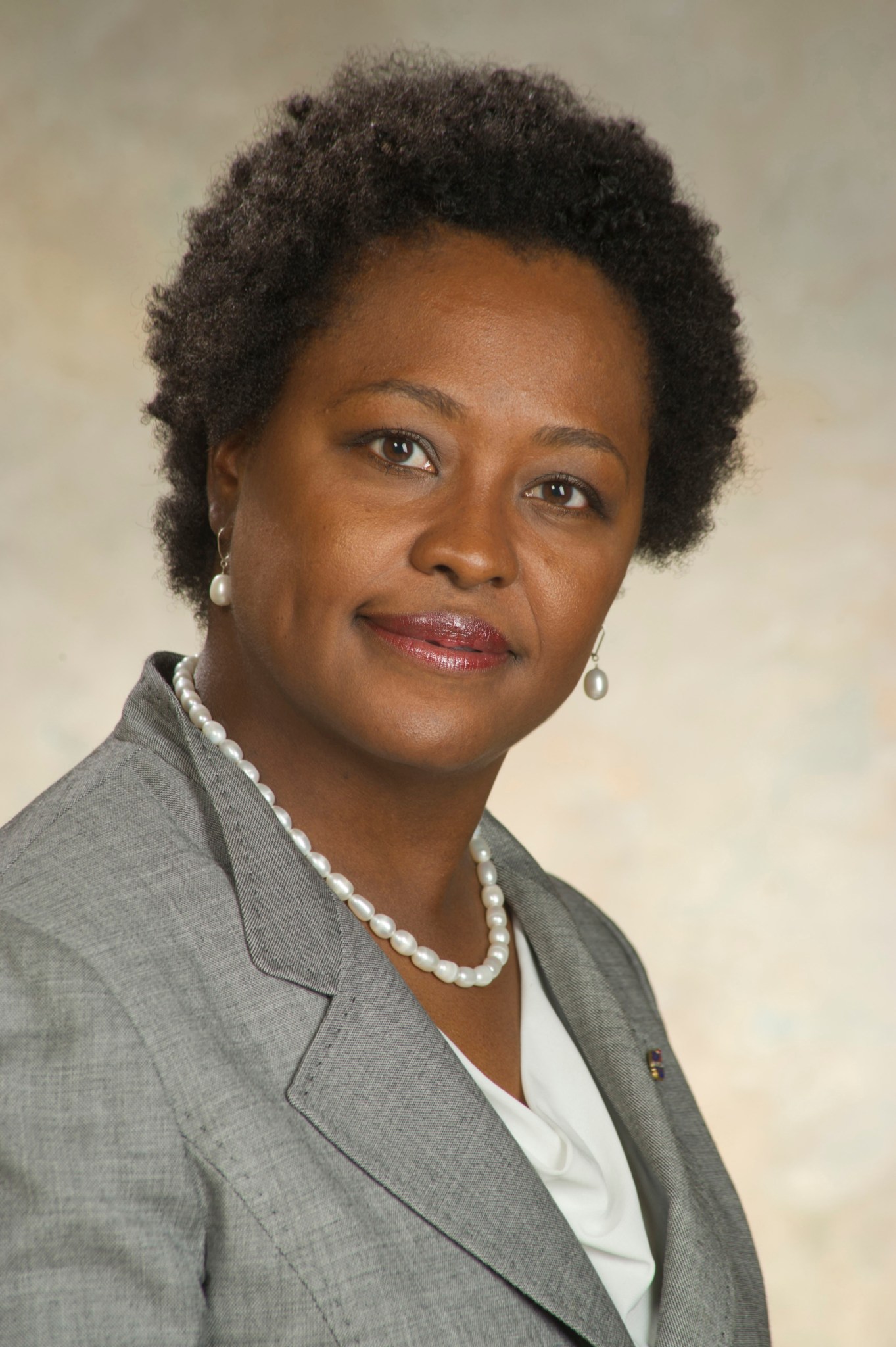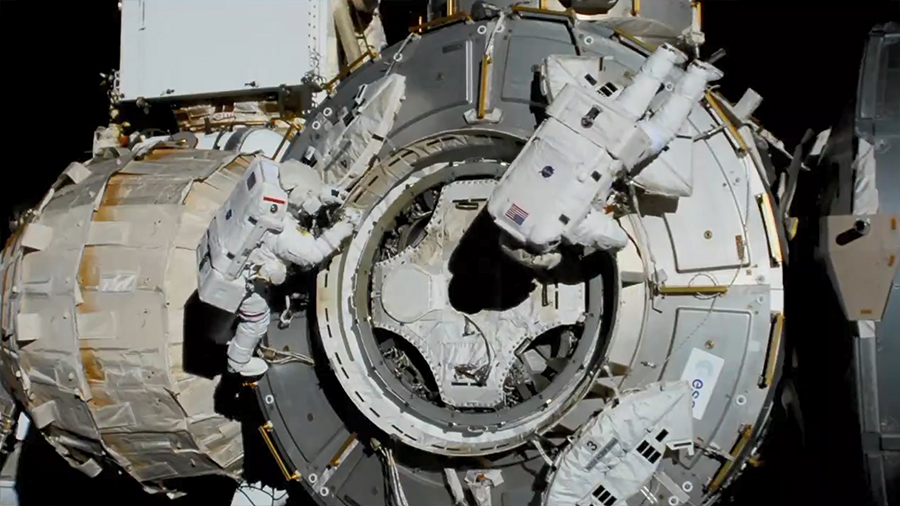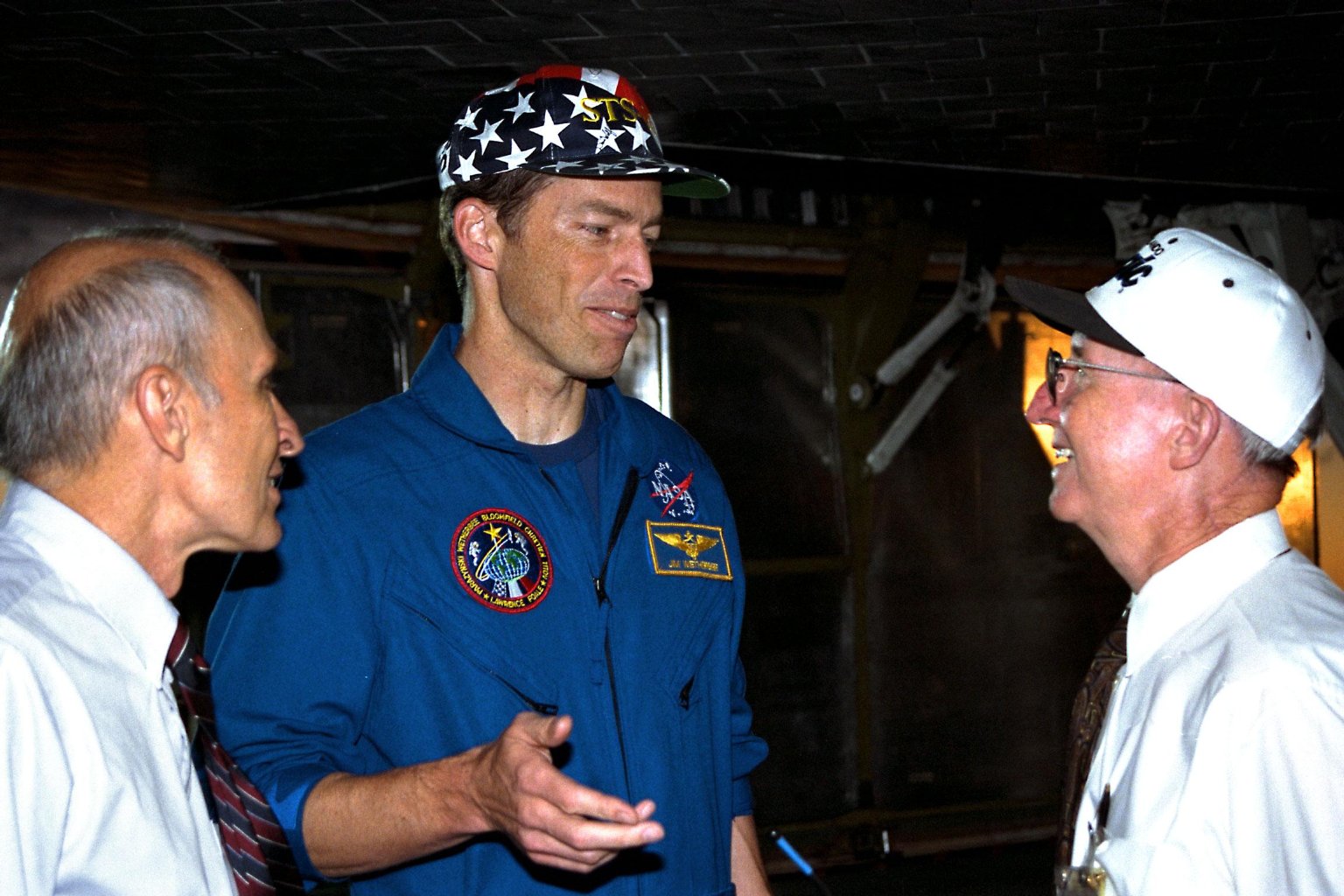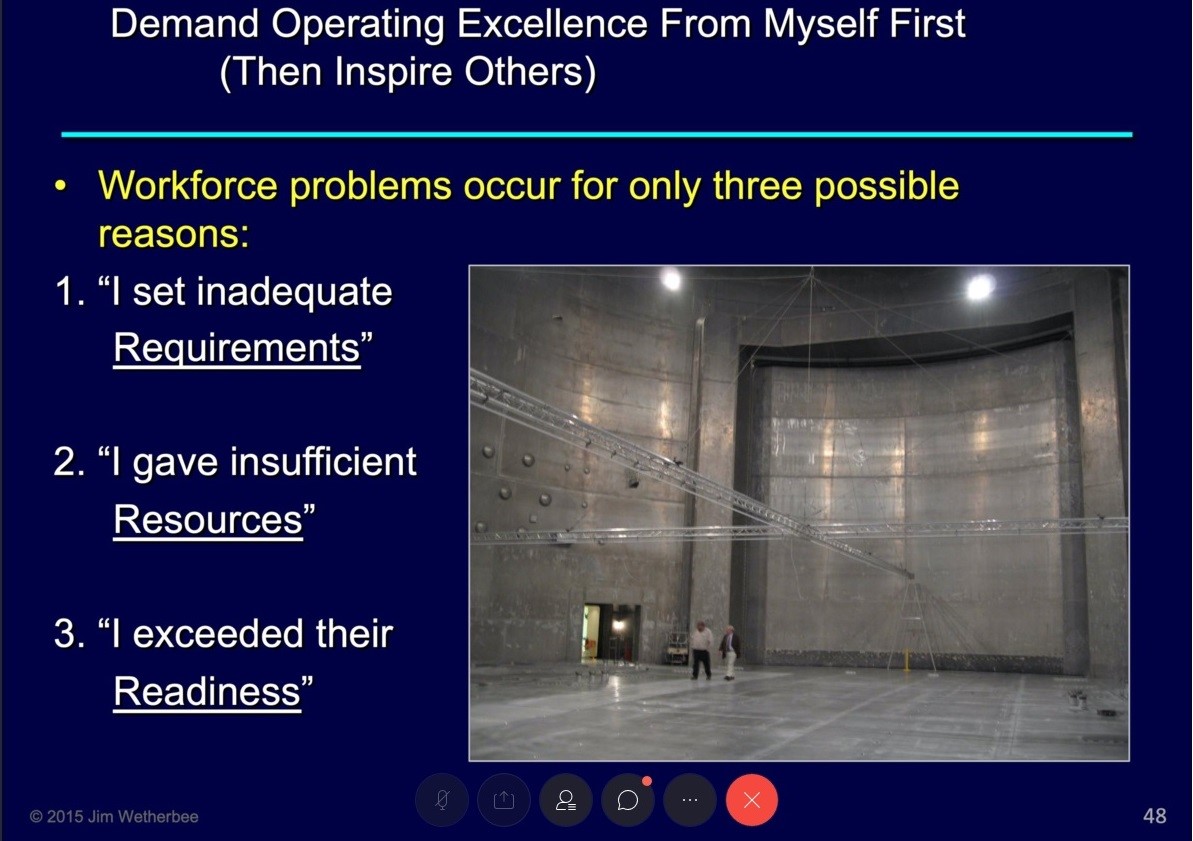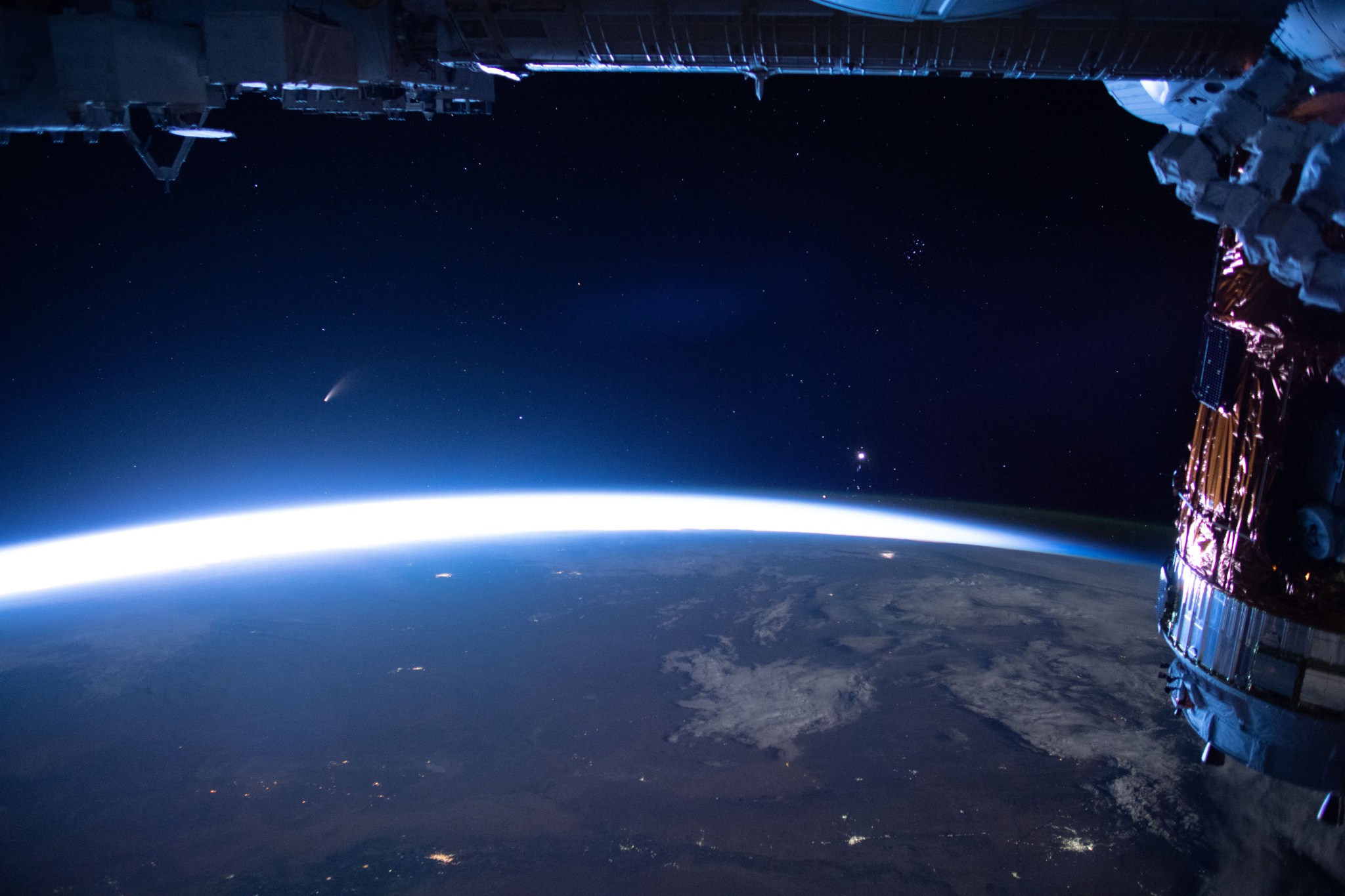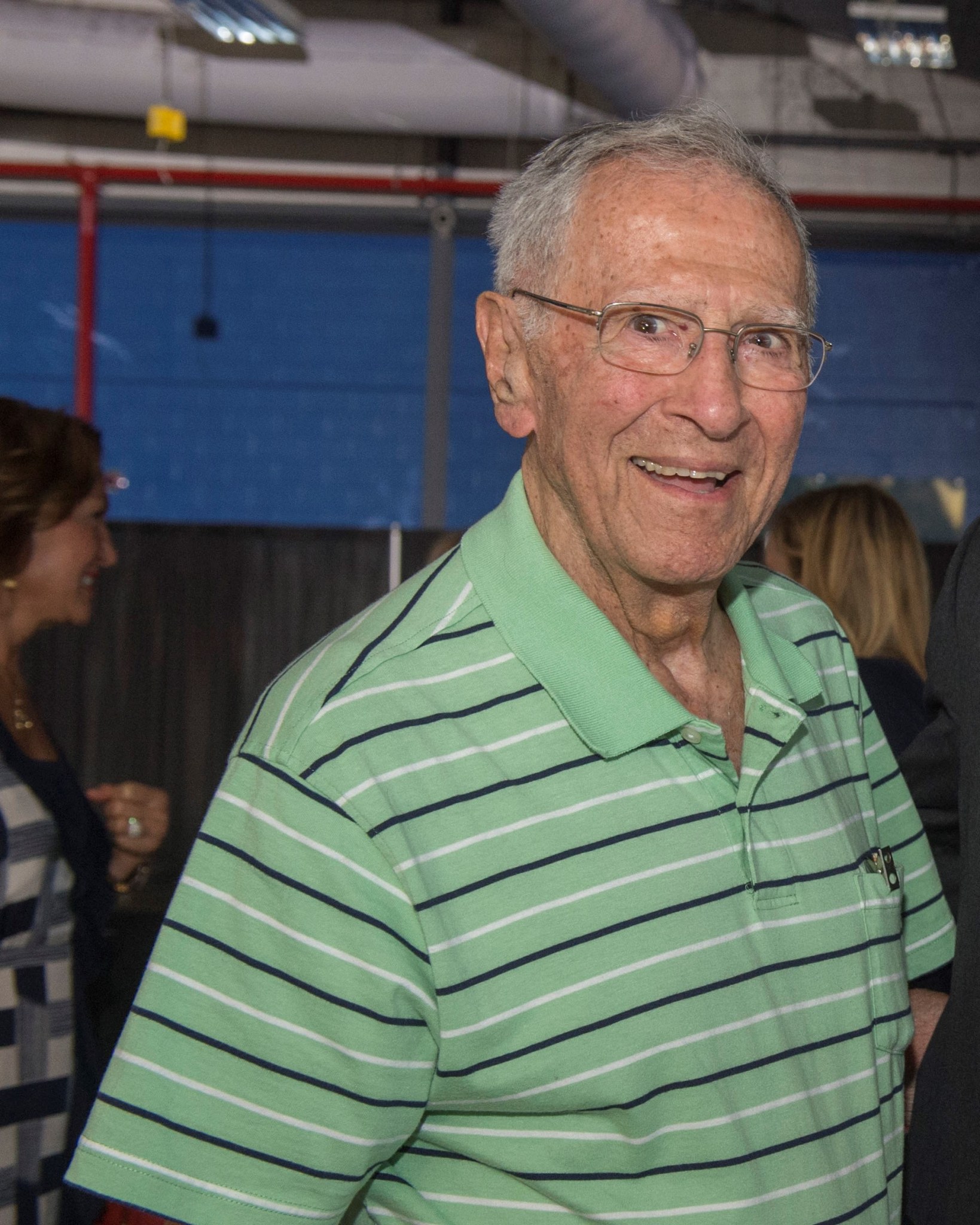In This Week’s Star
- Marshall Leadership Updates Workforce in Fourth Virtual Town Hall
- Caleb Fassett, Who Discovered Next Mars Rover’s Landing Site, Has Waited More Than 15 Years to Explore Fascinating Jezero Crater
- Marshall Teams Load Artemis I Hardware on Barge for Trip to Kennedy
- Angelia Walker Named Director of Spacecraft and Vehicle Systems Department
- NASA Mentor-Protégé Program Cultivates Industry Skill, Know-how, Future Talent
- NASA Astronauts Complete Spacewalks to Upgrade International Space Station
- Retired Astronaut Jim Wetherbee Shares Techniques of Operating Excellence, Controlling Risk
- Comet NEOWISE Visits Solar System in Once-in-a-Lifetime Event
- This Week in NASA History: Chandra Launches – July 23, 1999
- Former Marshall Propulsion Expert Alex McCool Dies
Marshall Leadership Updates Workforce in Fourth Virtual Town Hall
By Adam Farragut
NASA’s Marshall Space Flight Center held its fourth virtual town hall meeting July 14 as the center continued to navigate the unique circumstances brought upon by COVID-19. Marshall Director Jody Singer and Associate Director Steve Miley touched upon commonly asked questions from the workforce and discussed the ongoing efforts to resume certain on-site activities.
“We still are very closely monitoring the situation and we’re working very hard to make sure we keep you safe when you come on board the center,” Singer said. “We’re also making sure we’re turning on critical activities as we go along, but there is a definite protocol that we are doing when we turn on these tasks.”
“We’re looking at this from a methodical, risk-based approach,” Miley added. “All in an effort to keep everyone safe and healthy even though we’re turning on more work.”
Miley also explained how each newly activated task goes through a rigorous decision-making process prior to authorization. So far, roughly 80 tasks and nearly 900 team members have been authorized for on-site work.
Despite the unconventional circumstances, Marshall team members have accomplished a great deal while working in a limited on-site capacity. Singer and Miley detailed several center and agency milestones, including completion of the Artemis I Space Launch System structural testing campaign; the arrival and start of assembly of 10 booster segments at NASA’s Kennedy Space Center; the ongoing Green Run test series of tests at NASA’s Stennis Space Center; and the non-stop International Space Station science support from the Payload Operations Integration Center at Marshall. Employees at NASA’s Michoud Assembly Facility are also making progress on the Artemis II core stage hardware and engines.
Singer also thanked team members for their efforts to fight COVID-19 in in their communities and urged everyone to consider supporting the Feds Feed Families food drive.
Throughout the town hall, safety was the primary theme. From proper social distancing, the importance of wearing face coverings, and diligent handwashing and cleaning practices while working on-site, to ensuring team members have access to their office chair while teleworking, Singer and Miley continued to reiterate the importance of making sure every employee is safe while continuing Marshall’s mission.
“Whether you’re working on-site or at home, I really want to urge you to continue to be vigilant about safety procedures,” Miley said. “If we all stay cautious about using our masks and staying physically distant, it’s going to help all of us in the long term. Jody is leading us and the whole team is working together to do everything we can to protect your health, but when it really comes right down to it, you are most responsible for your own health and safety.”
To view the Marshall COVID-19 Safe at Work Protocol Guidelines or to read frequently asked questions about returning to on-site work, team members should visit Inside Marshall and continue to monitor NASAPeople for additional information. For those unable to access the virtual private network, center-specific sections are available on NASAPeople for Marshall and Michoud.
Farragut, an ASRC Federal/Analytical Services employee, supports the Office of Strategic Analysis & Communications.
Caleb Fassett, Who Discovered Next Mars Rover’s Landing Site, Has Waited More Than 15 Years to Explore Fascinating Jezero Crater
By Rick Smith
Imagine fulfilling your life’s ambition to explore a previously uncharted dried lakebed and the prehistoric river deltas that once emptied into it, carrying clay and other rich alluvial debris – and perhaps even the fossilized remains of ancient bio-organisms – that could help illustrate its long history.
Now imagine doing it roughly 40-50 million miles from home, in a windswept crater on Mars.
For Caleb Fassett, a planetary scientist at NASA’s Marshall Space Flight Center, experiencing that journey of discovery has been an ambition since his college days. And when NASA’s Mars 2020 mission launches to the Red Planet on July 30, he’ll be watching with the rest of the world as the mission starts on its journey to unlock new secrets about Earth’s sister world.
The Perseverance rover, a more sophisticated version of its predecessors Curiosity and Opportunity, boasts a phalanx of science instruments, 23 cameras and a helicopter drone dubbed Ingenuity. In February 2021, the rover will touch down in the previously unexplored Jezero crater to continue the work of NASA’s earlier rovers, charting the topography and geology of Mars in preparation for human missions to come.
The crater offers a host of science targets – potentially unlocking clues to past life on Mars, the makeup of its early environment billions of years ago, and geological and mineralogical history and processes detailed in Jezero’s rock strata. Officially named in 2007 – Jezero means “lake” in various Slavic languages – the site is roughly 30 miles in diameter and once was the site of standing water, as suggested by a network of fan-like deltas emptying into the crater and rich clay deposits throughout.
Fassett has been pondering the crater since he discovered it in 2004 as a planetary geosciences student at Brown University in Providence, Rhode Island, where he earned his doctorate and master’s degree in geological sciences in 2008 and then conducted post-doctoral research until 2011. There, he wrote a paper about Jezero, based on Mars Odyssey orbital images taken in 2001 and Mars Global Surveyor image and topography data captured beginning in 1999. Its findings led NASA to briefly consider Jezero as a possible 2011 landing site for the Mars Science Laboratory Curiosity rover. But rough terrain made that infeasible, based on the landing technology available at the time.
Since then, Fassett and his planetary science colleagues have been “waiting for terrain hazard avoidance and navigation tech to catch up to the science and get us to Jezero,” he said. “And now it has.”
Though participating scientists haven’t yet been selected for the mission, Fassett and dozens of other researchers who submitted proposals are waiting, as launch nears, to see if they will be tapped to join the team for Perseverance’s excursion onto the Red Planet. He admits the rock hound in him is pretty excited, regardless of whether his proposal is selected.
“Geologically speaking, the habitable environment that existed inside Jezero could be roughly 3 or 4 billion years old,” he said. “We don’t have access to many rocks on Earth from that era. So these studies could be really illuminating about the potential development of life on Mars and other planetary bodies in the early solar system.”
“There’s nothing like a good origin story,” Fassett said. He’s keen to explore the region’s geomorphology, sedimentology, and mineralogy, and to learn the origin of its carbonate rocks. The formation of carbonate rocks, such as limestone or dolomite, usually involves water – and on Earth, this process is often biologically mediated, or helped along by living marine organisms.
“Finding definitive evidence of past life is unlikely, but it would be an epic discovery,” he said. “With Perseverance’s sample handling and caching system, we’ll be able to collect samples for eventual retrieval and return to Earth, where high-powered laboratories can identify even the tiniest fossilized bio-signatures.”
Even if his proposal to be a participating scientist isn’t selected for Perseverance’s initial mission, Fassett is optimistic the rover will follow in the footsteps of its predecessors and experience a long, science-enriching tenure on Mars.
“Opportunity was designed for a 90-day mission, which stretched into 15 years of remarkable discovery,” he said. “And Curiosity is eight years in and still going strong. It found evidence of water on Mars and in 2014 made the first definitive identification of organics – the building blocks of life – but it hasn’t stopped to rest on those laurels yet.”
Fassett, who joined NASA full-time in 2016, previously taught planetary sciences at Mount Holyoke College in South Hadley, Massachusetts, from 2011-2016. In addition to his degrees from Brown University, he holds a bachelor’s degree in astrophysics and geosciences in 2002 from Williams College in Williamstown, Massachusetts.
“I am incredibly fortunate to do this work with so many immensely talented and passionate people,” he said. “Using robotic proxies to forge a path of exploration on Mars is so thrilling. Just imagine how exciting it will be when we get there in person.”
Smith, an ASRC Federal/Analytical Services employee, supports the Office of Strategic Analysis & Communications.
Marshall Teams Load Artemis I Hardware on Barge for Trip to Kennedy
Teams at NASA’s Marshall Space Flight Center moved the Artemis I launch vehicle stage adapter for NASA’s Space Launch System rocket onto the agency’s Pegasus barge July 17.
The adapter is the cone-shaped piece of hardware that connects the rocket’s core stage and interim cryogenic propulsion stage. Pegasus will transport the flight hardware to NASA’s Kennedy Space Center, where it will be integrated with other parts of the rocket in preparation for launch. Artemis I is the first in a series of increasingly complex missions that will enable human exploration to the Moon and Mars.
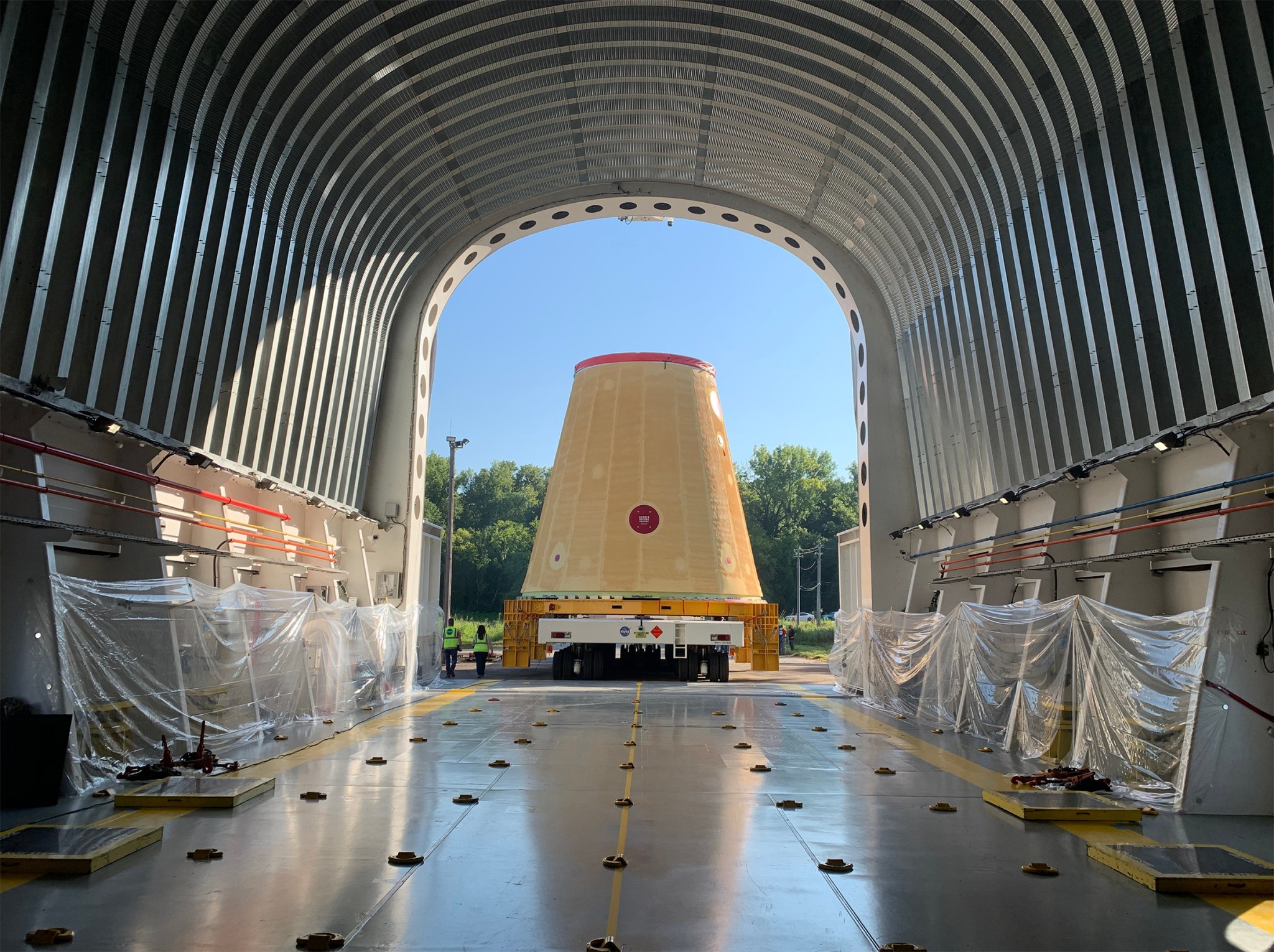
“The launch vehicle stage adapter for NASA’s Space Launch System rocket is the final piece of Artemis I rocket hardware built at NASA’s Marshall Space Flight Center,” Marshall Director Jody Singer said. “This milestone comes as Marshall teams just completed the structural test campaign of the SLS rocket that confirmed the rocket’s structural design is ready for Artemis missions to the Moon.”
Huntsville Mayor Tommy Battle joined Singer and other Alabama officials to mark the event. Singer read a proclamation by Alabama Gov. Kay Ivey declaring July 17 as Artemis Day in Alabama: “Alabamians are exceedingly proud of the Space Launch System achievements of today, and the advances of tomorrow made possible by the upcoming Artemis missions that will continue to demonstrate NASA’s benefit to humanity.”
Many Alabama companies built major parts of the rocket, including Teledyne Brown Engineering in Huntsville that serves as lead contractor for the launch vehicle stage adapter. The launch vehicle stage adapter’s cone shape partially covers the interim cryogenic propulsion stage to protect the RL10 rocket engine. The RL10, built by Aerojet Rocketdyne of Sacramento, California, powers the interim cryogenic propulsion stage, built by Boeing and United Launch Alliance in Decatur. The interim cryogenic propulsion stage accelerates NASA’s Orion spacecraft fast enough to overcome Earth’s gravity and set it on a precise trajectory to the Moon. Boeing also built the Artemis I core stage at NASA’s Michoud Assembly Facility and that stage is currently undergoing final Green Run testing at Stennis Space Center. After the arrival of the launch vehicle stage adapter in about two weeks, the core stage will be the final piece of Artemis I hardware to be delivered to Kennedy.
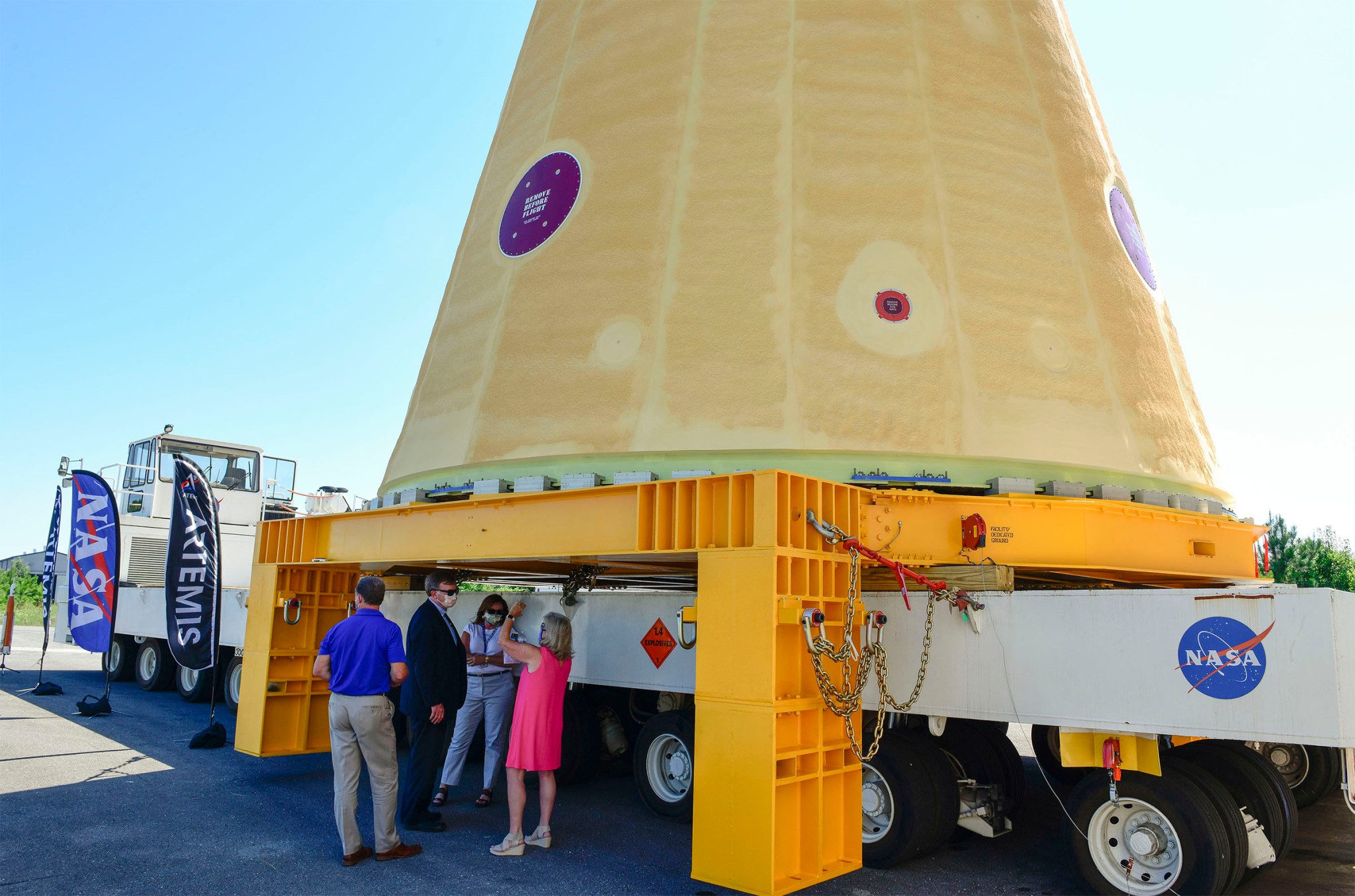
“The launch vehicle stage adapter is welded together as two separate cones that are then stacked on top of each other,” said Keith Higginbotham, launch vehicle stage adapter hardware manager at Marshall. “Marshall’s expertise with an innovative process called friction stir welding and the center’s large robotic weld tools made it possible to build some pieces of the rocket at Marshall while the core stage was built at the same time by Boeing at Michoud.”
Marshall teams also built the Artemis I Orion stage adapter, which is at Kennedy along with the interim cryogenic propulsion stage. Work is underway on the interim cryogenic propulsion stage, the launch vehicle stage adapter, and the Orion stage adapter for the SLS rocket’s second flight, Artemis II. Many companies and suppliers are busy completing parts of the rocket for the Artemis II mission that will send astronauts around the Moon inside Orion.
“Teledyne Brown is committed to supporting NASA’s Artemis program to return American astronauts to the Moon and are now manufacturing the launch vehicle stage adapter for the second Artemis lunar mission,” said Jan Hess, president of Teledyne Brown Engineering.
Angelia Walker Named Director of Spacecraft and Vehicle Systems Department
Angelia Walker has been appointed to the Senior Executive Service position of director of the Spacecraft and Vehicle Systems Department in the Engineering Directorate at NASA’s Marshall Space Flight Center. She will assume the position Aug. 31, at the retirement of Charlie Finnegan, the department’s current director.
The Senior Executive Service is the personnel system covering most of the top managerial positions in federal agencies.
Walker, who has been deputy director of the Spacecraft and Vehicle Systems Department since May 2019, is a 32-year NASA veteran. Since the start of her NASA career in 1987, she has held multiple positions in Marshall’s Safety & Mission Assurance and Engineering directorates. Walker spent her first 20 years supporting the space shuttle hardware propulsion elements’ readiness for flight. She was NASA’s first African American female quality engineer for the solid rocket booster and space shuttle main engine elements. She was senior Safety & Mission Assurance manager for the main engine elements alternate turbopumps at the Pratt & Whitney Resident Office in West Palm Beach, Florida. She was also lead Safety & Mission Assurance engineer at the Resident Office at Boeing in Huntsville for the Space Station Freedom Development and Production contract. As manager of the Safety, Reliability, and Quality Assurance Policy and Assessment Department, she conducted independent assessments and continuous risk management of NASA spacecraft and propulsion elements while influencing the core competencies of safety, quality, reliability, and software assurance for Marshall.
Walker transferred to Marshall’s Engineering Directorate as technical assistant to the engineering director, where she helped assure the technical excellence of all Marshall programs and projects. Walker was the space shuttle propulsion elements deputy chief engineer – contributing greatly to the technical excellence of the design, modification, and implementation of technical requirements and hardware for all space shuttle propulsion elements. Prior to her current role, she was chief of the Systems Engineering and Integration Division, providing systems engineering resources and technical guidance for the integration of the Space Launch System at the vehicle and element levels. Walker completed a detail assignment as acting associate director of engineering at Kennedy Space Center, as well as a detail assignment providing technical support to Marshall’s director, deputy director, and associate directors.
Walker has earned a Space Flight Awareness Honoree award; a NASA Exceptional Leadership Medal; a Silver Snoopy award, which honors NASA civil servants and contractors chosen by the astronaut corps for outstanding service to human spaceflight; multiple Director’s Commendations; and a number of Special Service and Group Achievement awards.
Walker and her husband, Sam, reside in Madison. They have a daughter, Kristen Walker Glover, and two granddaughters, Zoe and Noa.
NASA Mentor-Protégé Program Cultivates Industry Skill, Know-how, Future Talent
By Rick Smith
Ask professionals across trade industries about the benefits of allying veteran, large companies with energetic startups seeking to make their industry bones, and they’re likely to praise the marriage of proven business acumen, fresh perspectives, and bleeding-edge technological capabilities.
David Brock, manager for the NASA Mentor-Protégé Program, embraces those high-value rewards. When it comes to teaming space industry leaders with prospective NASA subcontractors, however – particularly among small, disadvantaged businesses and minority-serving academic institutions – he’d put one more mutually beneficial gain atop the list: people.
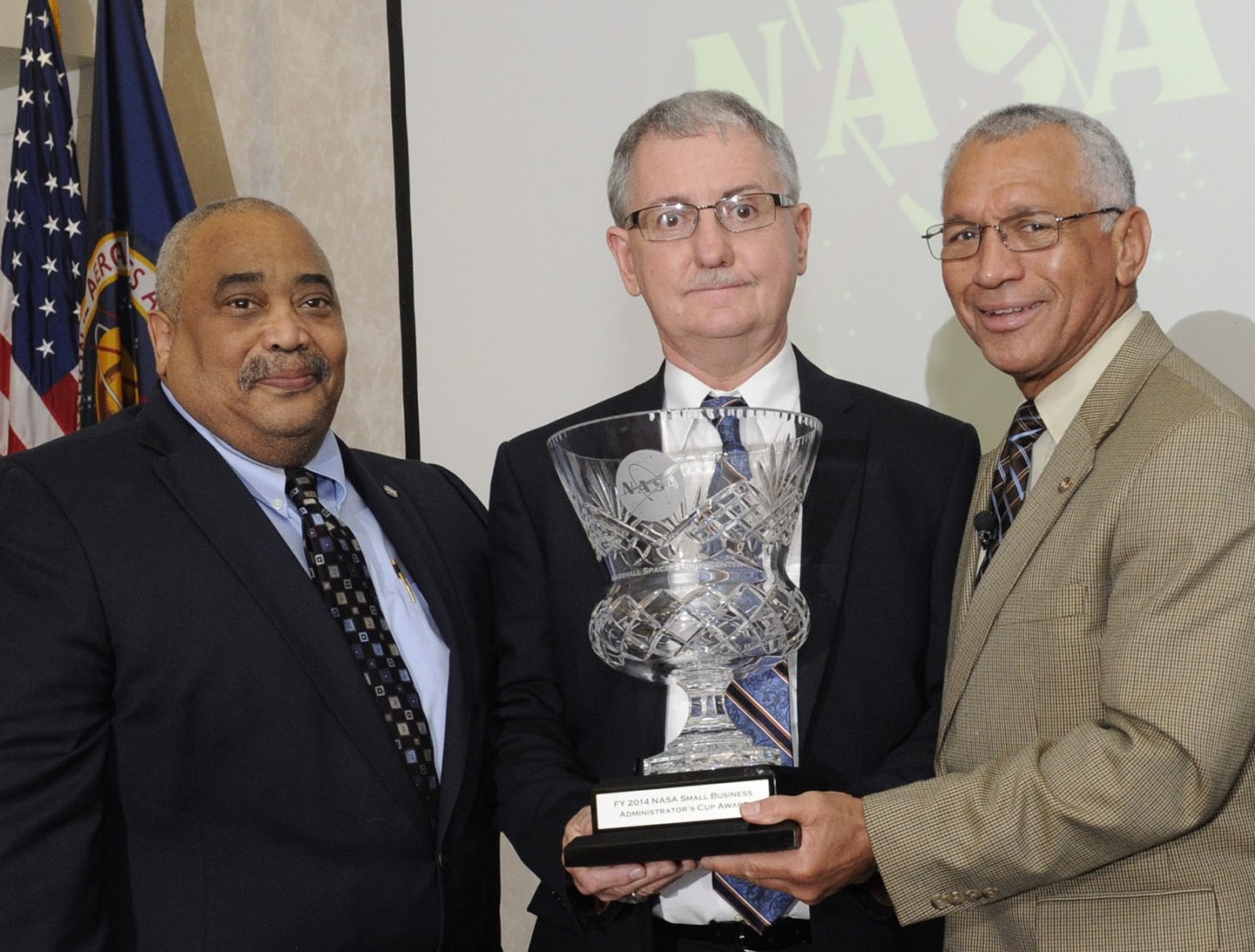
“State-of-the-art hardware and technology are the cornerstones of NASA’s mission in space, but for the past 60 years, talented, engaged, diverse human beings have been the driving force behind everything we do,” said Brock, small business specialist for more than three decades at NASA’s Marshall Space Flight Center.
“The NASA Mentor-Protégé Program nurtures that shared pioneering tradition,” he continued, “helping industry refine the skills and qualifications of the United States’ Artemis Generation workforce – while forming a pipeline to bolster and replenish that workforce for generations to come.”
Launched in 2008 by the NASA Office of Small Business Programs, the program facilitates agreements between NASA’s large contractors and eligible small businesses and academic institutions. Marshall has been a longtime frontrunner in facilitating Mentor-Protégé Agreements, and is a five-time recipient of the NASA Small Business Administrator’s Cup, the annual agency award presented to the field center with the best overall small business program. In 2019, NASA appointed Marshall’s small business office to lead the program for the agency.
“NASA has long appreciated Marshall’s leadership in all our small business endeavors,” said Glenn Delgado, associate administrator of the NASA Office of Small Business Programs at NASA Headquarters. “Given Marshall’s successful track record, I’m proud to entrust this critical element of NASA’s mission to David Brock and his team.”
Under Brock’s leadership, the Marshall team has guided 18 past and current Mentor-Protégé Agreements since 2008.
Stringently reviewed by NASA to ensure success for both parties, the agreements enable prime contractors to meet their agency goals and help small businesses make vital connections across industry and government, mature their technical and business acumen, and refine the skills of their workforce.
That’s a long-term win for the space program and the nation, Brock said. “A thriving aerospace industry ensures the sustained availability of vital products and services for NASA, industry, and other federal agencies.”
The program’s biggest impact, he noted, may be among minority-serving academic institutions and small, disadvantaged businesses, as well as those solely owned by women or people with disabilities, or that fall into a Historically Under-utilized Business Zone – a federal program created in 1997 to empower economically challenged communities. Minority-serving institutions include those identified as historically Black colleges and universities, or U.S. schools established before 1964 with the primary purpose of educating Black students.
Some two dozen NASA prime contractors currently qualify to participate as mentors. Both mentor firms and prospective protégés go through exhaustive review processes to qualify for the program. Since 2008, there have been 41 agreements across NASA’s 10 field centers, including three new agreements added in 2020:
- In March, NASA approved a two-year Mentor-Protégé Agreement between Jacobs of Tullahoma, Tennessee – a NASA prime contractor delivering engineering and science support services at Marshall – and JBS Solutions Inc. of Huntsville, a woman-owned, Historically Under-utilized Business Zone-certified and small disadvantaged business.
- In June, a one-year agreement was approved between The Boeing Co. and Southern University, an HBCU in Baton Rouge, Louisiana. The university will aid Boeing’s Space Launch System contract at NASA’s Michoud Assembly Facility, supporting delivery of SLS rocket stages for Artemis Moon missions.
- In July, NASA approved a two-year agreement between Leidos and Sure Secure Solutions, both of Reston, Virginia. Sure Secure, an economically disadvantaged, woman-owned small business will support Leidos’ information technology services at the NASA Shared Services Center at NASA’s Stennis Space Center.
Smith, an ASRC Federal/Analytical Services employee, supports the Office of Strategic Analysis & Communications.
NASA Astronauts Complete Spacewalks to Upgrade International Space Station
NASA astronauts Chris Cassidy and Bob Behnken completed spacewalks July 16 and July 21 to upgrade multiple systems on the International Space Station and prepare other external sites for future work.
On July 16, their six-hour excursion outside the orbiting outpost completed battery replacement for the solar arrays on the starboard truss. The work completes a 3 1/2-year effort to upgrade the space station’s power system. In total, 24 new lithium-ion batteries and adapter plates replaced 48 aging nickel-hydrogen batteries. The batteries store power generated by the station’s solar arrays to provide power to the science labs and experiments – aided and overseen by Payload Operations Integration Center personnel at NASA’s Marshall Space Flight Center – even when the station is out of direct sunlight, circling behind Earth during orbital night.
The astronauts completed multiple tasks during a five-hour, 29-minute spacewalk July 21. First, they installed two Robotic External Leak Locator units that space station robots can use to detect ammonia leaks. Ammonia is used to operate the station’s cooling system. Behnken and Cassidy then removed two fixtures from part of the station’s truss that were used during ground processing of the solar arrays before their launch. The pair also worked to prepare the outside of the Tranquility module for the future arrival of the Nanoracks commercial airlock, which will be used to deploy commercial and government-sponsored payloads into space. Their last task was to route Ethernet cables and remove a lens filter from an external camera.
Behnken and Cassidy also conducted spacewalks on July 1 and June 26. Both astronauts have completed 10 spacewalks. They join Michael Lopez-Alergria and Peggy Whitson as the only U.S. astronauts to reach that milestone. Behnken has spent 61 hours, 10 minutes on spacewalks, and Cassidy has logged 54 hours, 51 minutes.
Space station crew members have conducted 231 spacewalks in support of assembly and maintenance of the station, totaling 60 days, 12 hours, and 3 minutes.
Retired Astronaut Jim Wetherbee Shares Techniques of Operating Excellence, Controlling Risk
By Will Bryan
Perhaps no one in the spaceflight industry experiences risk like the astronauts who strap themselves on top of thousands of gallons of rocket fuel and are vaulted through the atmosphere into the void of space. Jim Wetherbee – a retired naval aviator and NASA astronaut who flew six space shuttle missions, commanding five of them – gave a virtual Mission Success is in Our Hands talk July 16 about risk management and his “Techniques for Operating Excellence.”
Wetherbee emphasized the importance of having the proper mental attitude for dealing with risk – whether building and flying rockets, driving down the road, or simply walking through a gate. A few of his techniques include:
- Develop and maintain risk awareness: Search for vulnerabilities in the system, maintain situational awareness, and anticipate the changing risk.
- Identify trigger steps: Points in the checklist or procedures where absolute concentration is required.
- Perform verification: Different types of verification are needed for different scenarios.
- Demand operating excellence from myself first (then inspire others): Focus on the quality of work; excellence will follow.
Wetherbee was selected for the astronaut corps in 1984 and became an astronaut in 1985. He held multiple leadership positions at NASA’s Johnson Space Center while as an astronaut and following his last flight. He retired from the agency in 2005.
Before Wetherbee’s talk, Jennifer Zuckerman – a Jacobs Engineering employee at Marshall supporting the software certification for NASA’s Space Launch System rocket – was recognized with Marshall’s 20th Golden Eagle Award. The award is presented to team members who make significant, identifiable contributions to flight safety and mission success.
Marshall’s Safety & Mission Assurance Directorate, with partner Jacobs Engineering of Huntsville, promotes awareness and appreciation for the connections between employees’ everyday activities, the overall success of NASA and Marshall missions, and the safety of astronauts through the Mission Success is in Our Hands program. The next scheduled talk is Oct. 15, featuring Marshall’s Lisa Watson-Morgan, program manager for NASA’s Human Landing System.
To learn more about the Mission Success is in Our Hands program, visit here.
Bryan, an ASRC Federal/Analytical Services employee, supports the Office of Strategic Analysis & Communications.
Comet NEOWISE Visits Solar System in Once-in-a-Lifetime Event
By Emily Clay and Lauren Lambert
For most Americans, July is traditionally a time to look to the skies to watch dazzling firework displays. However, this month there is a different kind of show in the sky.
The comet C/2020 F3, better known by the acronym NEOWISE – a nod to NASA’s Near-Earth Object Wide-field Infrared Survey Explorer telescope, which discovered the comet March 27 – has quickly become a popular solar system visitor. Its popularity is warranted, as it is the brightest comet since Comet Hale-Bopp that passed by Earth in 1997.
Comet nuclei are cosmic snowballs of frozen gases, rock, and dust that orbit the Sun. They can range in size from a few miles to tens of miles wide, and the nucleus of NEOWISE measures about 3 miles across. When these comets approach the Sun, their frozen bodies start to sublimate, and they spew dust and gasses in a tail that can span millions of miles.
NEOWISE made its harrowing close approach to the Sun, known as its perihelion, July 3 and it is now zooming past Earth on its way back out of the solar system. NEOWISE will make its closest approach to Earth – 64 million miles – on July 22.
To see NEOWISE, look to the northwestern sky about an hour after sunset. The comet will be below the stars that make up the bowl of the Big Dipper. Although NEOWISE gets higher in the sky every evening by about 2 degrees, it is also getting dimmer as it makes its journey away from Earth. By the end of the month, it will be too dim to see with the unaided eye.
Skygazers need a clear view of the horizon to see this comet. Beaches, fields, and areas with higher elevations are great observation spots. In areas with more light pollution, binoculars may be necessary for viewing. Catching a glimpse of NEOWISE is a once-in-a-lifetime event, as the comet won’t visit again for 6,800 years.
For more information on comets, visit NASA’s Solar System Exploration website.
For comet-related, kid-friendly activities, visit NASA Science Space Place.
Clay and Lambert, both NASA interns, are supporting the Office of Strategic Analysis & Communications this summer.
This Week in NASA History: Chandra Launches – July 23, 1999
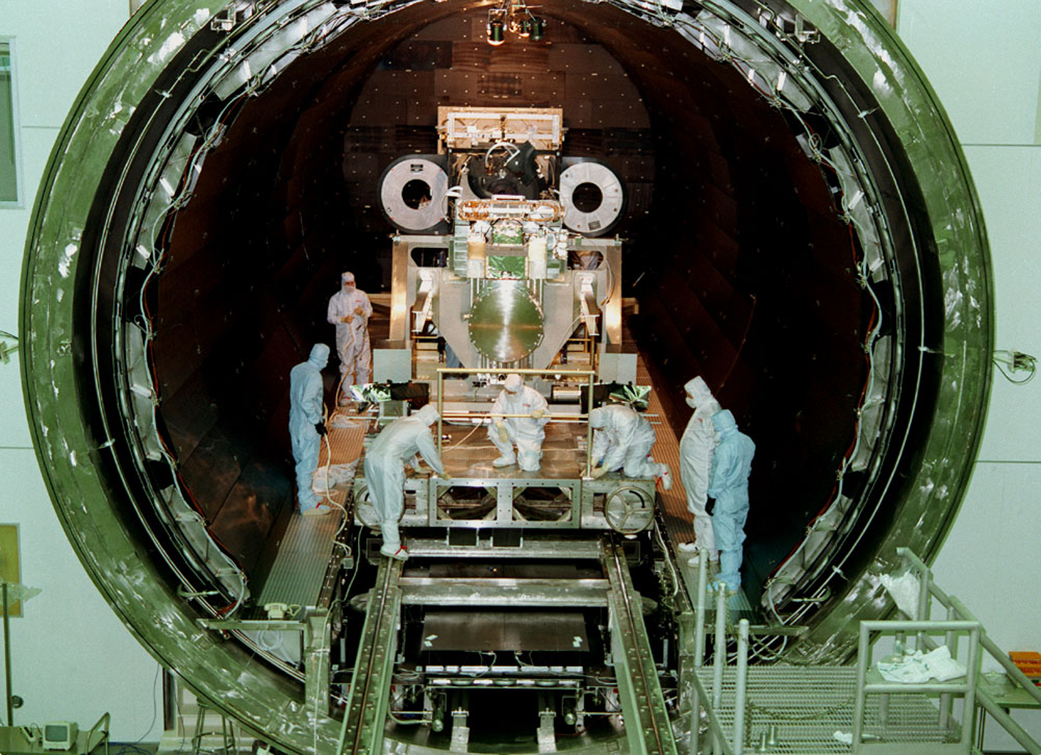
This week in 2001, space shuttle Atlantis, mission STS-104, launched from NASA’s Kennedy Space Center on a 12-day mission to the International Space Station. In a series of three spacewalks, astronauts attached the Quest joint airlock module to the Unity node and affixed high-pressure gas tanks to the airlock. The space station and shuttle crews also tested nitrogen and oxygen lines for use on future shuttle missions and installed valves to connect Quest to the station’s environmental control system. Here, the Quest airlock is installed onto the starboard side of the Unity node. Today, the Payload Operations Integration Center at NASA’s Marshall Space Flight Center serves as “science central” for the International Space Station, working 24/7, 365 days a year in support of the orbiting laboratory’s science experiments. The NASA History Program is responsible for generating, disseminating, and preserving NASA’s remarkable history and providing a comprehensive understanding of the institutional, cultural, social, political, economic, technological, and scientific aspects of NASA’s activities in aeronautics and space. For more pictures like this one and to connect to NASA’s history, visit the Marshall History Program’s webpage. (NASA)
Former Marshall Propulsion Expert Alex McCool Dies
Alex McCool, 96, a longtime propulsion expert at NASA’s Marshall Space Flight Center, died July 14.
McCool retired from NASA in 2004, after more than 40 years with the agency. Following retirement, he served as an emeritus docent at the U.S. Space & Rocket Center, where he continued to share his passion for space with others.
“I am deeply saddened by the loss of Alex McCool,” Marshall Director Jody Singer said. “He was a mentor and friend to me and a giant upon whose shoulders I stand today. Because of his work on Apollo, the Space Shuttle Program, and more, man landed on the Moon. His legacy pays forward to the hard work we are doing on Artemis to go back to the Moon to stay.”
McCool joined NASA upon Marshall’s establishment in 1960, working with Wernher von Braun’s team to design the propulsion systems for the Saturn rockets. His positions included manager of Marshall’s Space Shuttle Projects Office, chief of the Astronautics Laboratory Projects Office, acting director of the Astronautics Laboratory, director of the Structures and Propulsion Laboratory, lead for space shuttle Challenger’s solid rocket booster recovery effort at NASA’s Kennedy Space Center, and director of Marshall’s Safety & Mission Assurance Directorate.
McCool was instrumental in America’s space program prior to beginning his NASA career. McCool transferred from the Army Corps of Engineers to the Army’s Ordinance Corps in 1954, working as a propulsion engineer in the Guided Missile Development Division at Redstone Arsenal. There, he developed propulsion systems for early U.S. space rockets. As chief of Engine Systems Analysis with the Army’s Ballistic Mission Agency, he was a key participant in the propulsion design of the Jupiter rocket – which placed America’s first satellite, Explorer 1, into orbit.
“Alex challenged us as a team,” Singer said, “but he also cared about our well-being. He would remind us of his priorities in this order: faith, then family, then work. Looking back, that’s one of my favorite things about him. I will always be touched by his genuine support, passion for the mission, and compassion for his team.”
After serving as a first class petty officer and machinist mate in the Navy, McCool earned a bachelor’s degree in mechanical engineering at the University of Louisiana at Lafayette and a master’s degree in engineering at Louisiana State University in Baton Rouge.
McCool is survived by his children, Alex McCool III and Janet Cooper, four grandchildren, and five great-grandchildren.




























